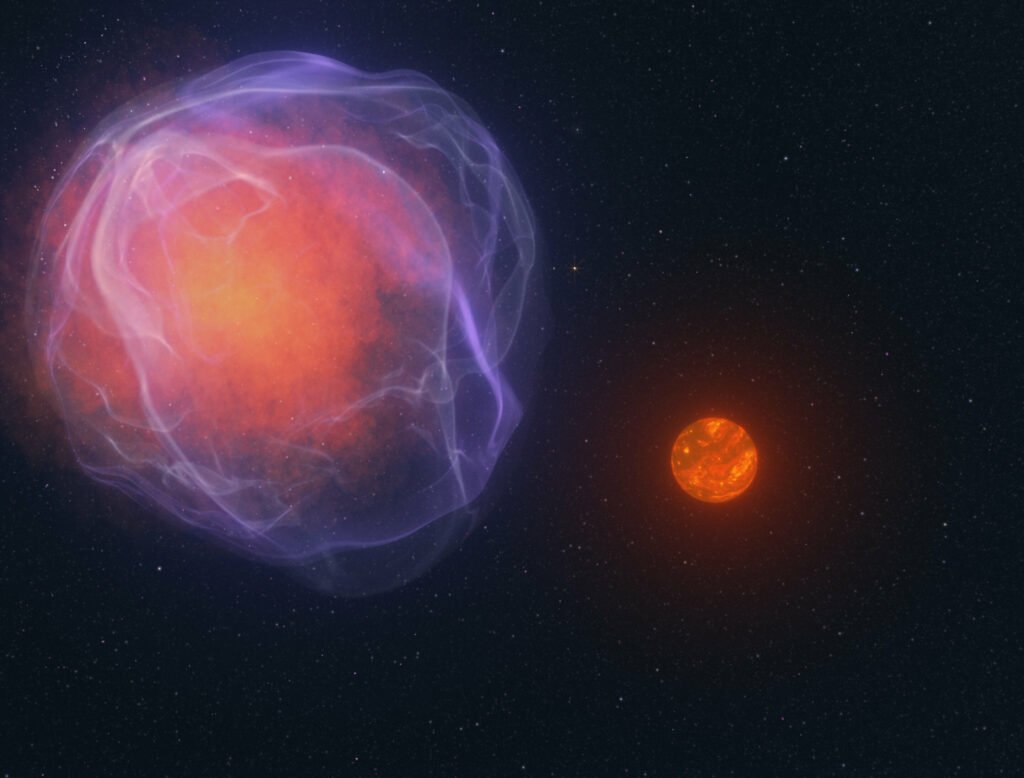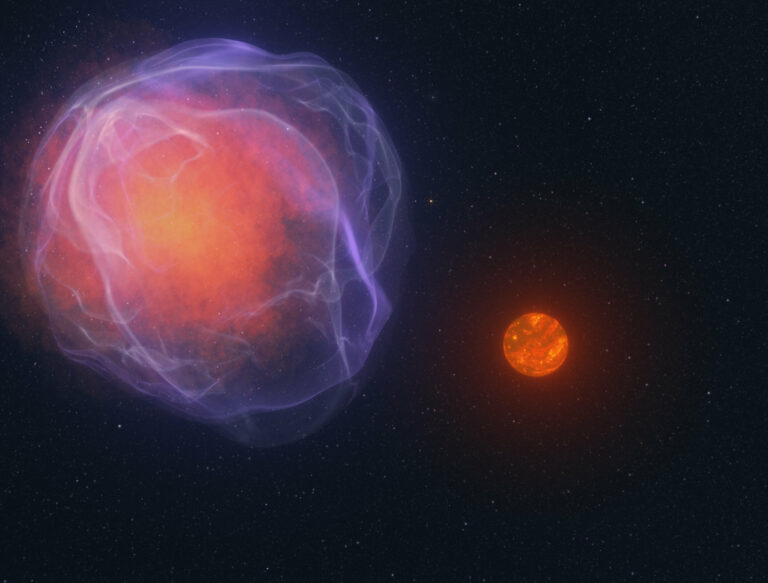Lone Star: Monitoring a Low-Mass Star’s Journey Across the Milky Way
Some might think that it is the sun staying still while the planets are revolving around it, but this is not the case, the sun is actually moving around the milky way galaxy at a speed roughly at 220 km/sec which is almost half a million miles per hour. Still, as fast as that might sound, when a faint red star was observed moving across the sky at a distinctly accelerated speed, researchers started paying attention.

Thanks to the efforts of a citizen science project called Backyard Worlds: Planet 9 and the team of astronomers from across the country have discovered a hypervelocity L subdwarf star which is flying through the Milky Way. Even more remarkably, this star might actually be moving in a way that brings it to leave the Milky Way galaxy entirely. The research undertaken by the UC San Diego astronomer Adam Burgasser was discussed at the press conference held during the 244th national meeting of the AAS in Madison, Wisconsin.
The star, appropriately dubbed CWISE J124909+362116. 0 (“J1249+36”), was first noticed by some of the over 80,000 citizen science volunteers participating in the Backyard Worlds: Planet 9 project, which sift through mountains of data gleaned from the WISE mission that NASA conducted from 2009 to 2011. This project aims at utilizing the sharp skills of a human being who is hardwired to seek and find patterns and outliers much more efficiently than a computer algorithm. In data files, volunteers differentiate the moving objects and when several volunteers have labeled the same object, astronomers pursue it.
J1249+36 received attention of observers at once as the object was moving across the sky at the speed that was estimated to be about 600 km/second (1. This velocity allows the star to escape the gravitational pull of the milky way and thus it can be categorised as a hypervelocity star.
As an attempt to obtain more details regarding this celestial object, Burgasser enlisted the help of the W. M. Keck Observatory in Mauna Kea, Hawaii to spectroscopically study the object’s infrared emissions. It revealed that the star was an L subdwarf, a rare type of stars that are low in both mass and temperature which are thought to be remnants of the earliest wave of star formation in the galaxy.
Analyzing of the J1249+36 composition became possible due to a new set of atmosphere models created by Roman Gerasimov, the student of UC San Diego, with the help of Efrain Alvarado III, the scholar of UC LEADS program, who adjusted the atmosphere models for the L subdwarfs study.
Alvarado benefited from this project and from the meeting: “It was thrilling to observe that our models accurately aligned with the observed spectrum,” Alvarado said before he talked about his modeling work at the AAS meeting.
Using information derived from both spectrum and imaging outcomes of multiple ground-based telescopes, the team was able to pinpoint in detail the exact position and velocity of J1249+36 within the galaxy so as to be able to reasonably forecast its course through Milky Way.
Burgasser noted that: “The source became very interesting at this stage as the velocity and the direction of motion could have let it escape from the Milky Way.
What gave this star a kick?
As for the extraordinary trajectory of J1249+36, the researchers analyzed two factors that might be capable of explaining it. At first, for the object J1249+36, it was thought to be a low mass companion of a white dwarf. White dwarfs are stars that have blown all the gas they could and are no longer existent stars. If a non-degenerate companion star shares the similar orbit with a white dwarf, mass can be transferred causing recurrent novae. But if the white dwarf gathers too much mass, it may spiral inwards and trigger a supernova.
As Burgasser stated, “In this type of supernova, the white dwarf is destroyed and the companion star is left free to escape at its original orbital velocity plus an additional kick velocity from the explosion. ” Our calculations agree with this conclusion. However, since the white dwarf no longer exists and the remnants of the explosion have disperses over millions of years, there is no solid proof to support the theory that J1249+36 originate from this explosion.
Or in the second case, the object J1249+36 was born within the globular cluster, which represents very compact stellar system with a definite spherical shape. The cores of these cluster might contain black holes of different mass, this is why this theory has been developed. They can be found in binary systems and act as a powerful slingshot for the stars that come too close to them.
Academicнарно: Kyle Kremer, an incoming Assistant Professor in UC San Diego’s Department of Astronomy and Astrophysics, said that in a star-black hole binary where a star has been captured by a black hole, the complicated three-body interaction can lead to the star being expelled from the globular cluster. By conducting simulations, Kremer was able to find that albeit being a very rare occurrence, [these] interactions can eject a low-mass subdwarf from a globular cluster in a manner similar to J1249+36.
Kremer noted that this is a clear indication of a star that has been disrupted, but the actual globular cluster responsible for this star remains undetermined. By going back in time to view its position, J1249+36 is located on a heavily crowded part of the sky which might mean that there are hidden clusters.
To establish the fate of J1249+36 and to decide if it can be explained by either of these Mechanisms or another one, the team wishes to assess the elemental content of the object. For instance, the explosion of its weapon, the white dwarf, can produce heavy elements, which may possibly have contaminated the atmosphere of J1249+36 during its ejection. Besides, the distribution of stars in the clusters of galaxies and in the satellite galaxies of the Milky Way may give information on the formation of J1249+36 out.
Gerasimov who has done modeling work to determine the metallicity of cool stars in various cluster of globulars noted that they are in essence trying to look for a chemical signature that could be used to point to the original system of the star. Some of the data collected for this study will also be used at the AAS meeting.
Thus, whatever triggered the fast motion of J1249+36, the discovery of such a moving object is always a valuable addition to astronomers’ toolkit in efforts to learn more about the history and activity of the Milky Way galaxy.
Do not forget to share your opinion with us to provide you with the best posts !




0 Comments